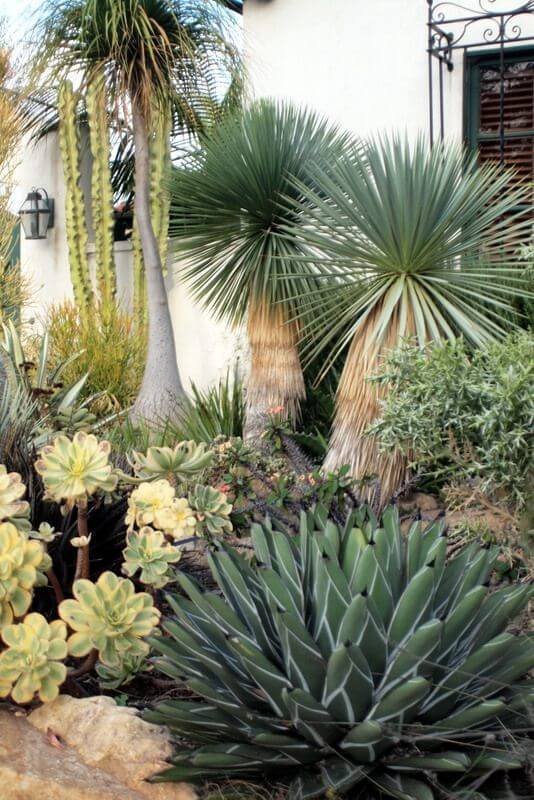Top Drought-Tolerant Plants for Xeriscaping

Top Drought-Tolerant Plants for Xeriscaping
Xeriscaping: The Art of Water-Wise Gardening
In the face of increasing water scarcity, xeriscaping has emerged as a beacon of hope for eco-friendly gardening enthusiasts. Originating from the Greek word 'xeros,' meaning dry, xeriscaping is a landscaping method that uses drought-tolerant plants for xeriscaping to reduce or eliminate the need for irrigation. Let's dive into the world of xeriscaping and explore the top drought-tolerant plants for your garden.
The Philosophy Behind Xeriscape Design
Xeriscape design is more than just a collection of drought-resistant plants. It's a philosophy that embraces the natural environment, seeking to create beautiful landscapes that thrive in harmony with local climate and soil conditions. By grouping plants with similar water needs, you can create a stunning, low-maintenance garden that sips water instead of guzzling it.
The Magic of Water-Efficient Plants
Water-efficient plants are the superheroes of the plant world. They've adapted to survive in dry conditions, making them the perfect choice for desert landscaping and other water-scarce environments. But don't let the term 'desert' fool you. Many of these plants are incredibly beautiful, with vibrant flowers, striking foliage, and unique textures.
Top 10 Drought-Tolerant Plants for Xeriscaping
1. Lavender
Lavender is a fragrant, drought-resistant herb that produces beautiful purple flowers. It thrives in full sun and well-drained soil, making it an excellent choice for xeriscape design.
2. Russian Sage
This hardy perennial produces tall spikes of lavender-blue flowers that attract bees and butterflies. Russian sage is extremely drought-tolerant and does well in full sun.
3. Black-Eyed Susan
A cheerful addition to any garden, Black-Eyed Susans are known for their bright yellow petals and dark centers. They're highly drought-tolerant and bloom throughout the summer.
4. Agave
Agaves are succulents that store water in their fleshy leaves, making them extremely drought-tolerant. They come in various sizes and shapes, adding a unique texture to your garden.
5. Bougainvillea
This vibrant, flowering vine is a showstopper in any garden. Bougainvillea is highly drought-tolerant and thrives in hot, sunny conditions.
6. Lantana
Lantana is a hardy, drought-tolerant shrub that produces clusters of small, colorful flowers. It's a magnet for butterflies and hummingbirds.
7. Sedum
Sedums are succulents that come in a wide variety of shapes and sizes. They're highly drought-tolerant and produce beautiful, star-shaped flowers.
8. Yarrow
Yarrow is a hardy perennial that produces flat clusters of small flowers. It's highly drought-tolerant and attracts a variety of pollinators.
9. Coneflower
Coneflowers are known for their large, drought-tolerant flowers that resemble daisies. They come in a variety of colors and attract bees and butterflies.
10. Catmint
Catmint is a fragrant, drought-resistant herb that produces spikes of lavender-blue flowers. It's a great choice for xeriscape design and attracts a variety of pollinators.
Designing Your Xeriscape Garden
Designing a xeriscape garden is like painting a picture. You want to create a balance of colors, textures, and forms. Start by grouping plants with similar water needs. Then, consider the height, spread, and bloom time of each plant. Don't forget to include some hardscape elements, like rocks and pathways, to add interest and reduce water use even further.
The Benefits of Xeriscaping
The benefits of xeriscaping are numerous. Not only does it save water, but it also saves time and money. Drought-tolerant plants for xeriscaping require less maintenance than traditional landscaping plants, freeing up your time for other activities. Plus, xeriscaping can increase your property value and provide habitat for local wildlife.
Xeriscaping Tips for Beginners
If you're new to xeriscaping, start small. Choose a sunny spot in your garden and plant a few drought-resistant plants. Observe how they grow and adapt to your local conditions. Don't be afraid to experiment with different plant combinations and designs. Remember, xeriscaping is a journey, not a destination.
Incorporating Xeriscaping into Your Existing Landscape
You don't have to start from scratch to enjoy the benefits of xeriscaping. You can incorporate drought-tolerant plants for xeriscaping into your existing landscape. Start by replacing water-guzzling plants with water-wise alternatives. Then, gradually expand your xeriscape garden over time.
Xeriscaping: A Journey Towards Sustainability
Xeriscaping is more than just a landscaping trend. It's a journey towards sustainability. By embracing drought-tolerant plants for xeriscaping, you're taking a stand for water conservation and eco-friendly gardening. So, why not give it a try? Your garden, and the planet, will thank you.
For more inspiration and ideas, check out this guide on xeriscaping.
Conclusion
Xeriscaping is a beautiful and sustainable way to garden. By choosing drought-tolerant plants for xeriscaping, you can create a stunning, low-maintenance garden that conserves water and supports local wildlife. So, what are you waiting for? Grab your gloves and let's get planting!
FAQs
1. What are the best drought-tolerant plants for full sun?
Some of the best drought-tolerant plants for full sun include lavender, Russian sage, and bougainvillea. These plants thrive in hot, sunny conditions and require minimal water once established.
2. Can I incorporate xeriscaping into my existing garden?
Absolutely! You can incorporate xeriscaping into your existing garden by replacing water-guzzling plants with drought-tolerant alternatives. Start small and gradually expand your xeriscape garden over time.
3. What are the benefits of xeriscaping?
The benefits of xeriscaping include water conservation, reduced maintenance, cost savings, increased property value, and habitat creation for local wildlife.
4. What are some common misconceptions about xeriscaping?
Some common misconceptions about xeriscaping include the idea that xeriscape gardens are boring, brown, or devoid of life. In reality, xeriscape gardens can be vibrant, colorful, and full of life.
5. How do I get started with xeriscaping?
To get started with xeriscaping, choose a sunny spot in your garden and plant a few drought-resistant plants. Observe how they grow and adapt to your local conditions. Don't be afraid to experiment with different plant combinations and designs.
0 Response to " Top Drought-Tolerant Plants for Xeriscaping"
Post a Comment